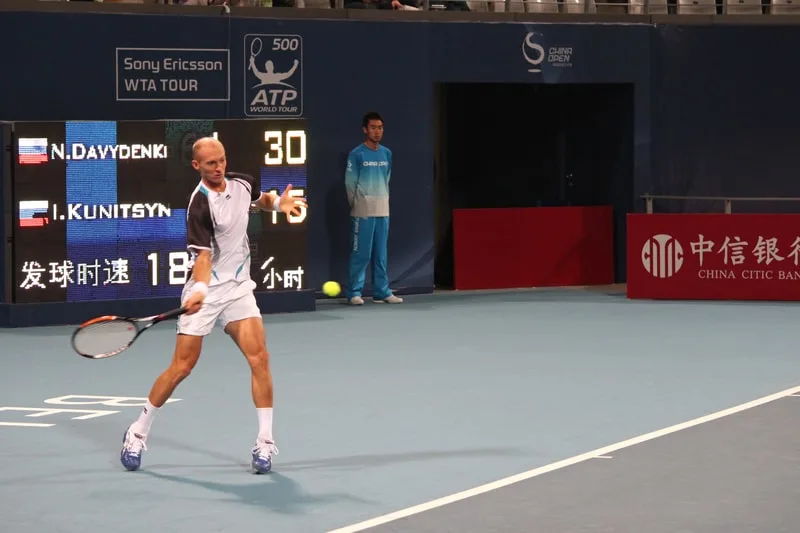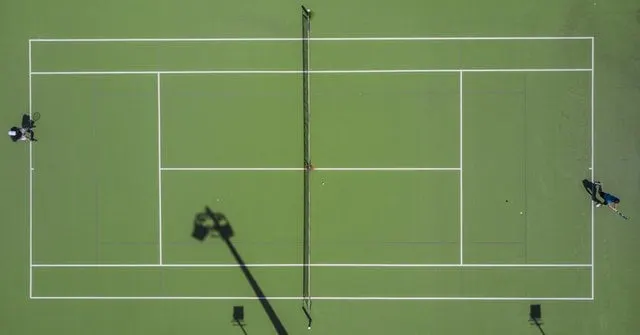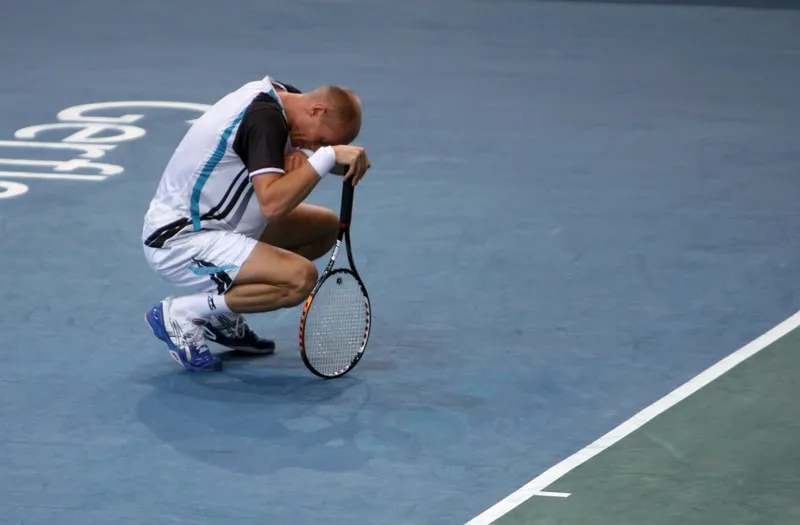
A couple of months ago, I saw a tennis tournament advertised on a poster. What caught my eye was something written at the bottom.
“The tournament will use a round-robin format”
Call me naive, simple, or just uninformed, but I’ve never fully understood what this means. So I decided to do a little digging into what round robin means, and how it is used in tennis.
In this blog post, you’ll learn how round-robin is used in tournaments, how it works in tennis, the rules of using this format, and the pros and cons of using it in a competition.
Round Robin Basics
Although it isn’t used in grand slam events, round-robin is still a popular format for some tennis tournaments.
It requires all players to play against each other. It offers one of the fairest ways for a group of players to compete. However, it also requires more matches compared to other styles of tournaments.
For professional tournaments, the players may be divided into groups of four. The top player from each group advances to the next round.
The format continues with each remaining player competing against the others. You can use this type of tournament for all types of tennis competitions including singles, doubles, and mixed doubles competitions.
Round Robin Rules

The rules for tennis round-robin tournaments vary depending on the tournament and the number of players. However, the basic structure requires each player to play against every other player just once.
The winner is typically the player with the most wins. If the number of players exceeds 6, the tournament is often divided into rounds, and players are divided into groups.
The main rule for a round-robin tournament is that each player has the chance to play all other players. This is considered fairer compared to a knockout or elimination-style tournament.
How Does Round Robin Work?

The round-robin format depends on the number of players. With straight round-robin tournaments, there are no rounds. Each player competes against the other players in turn.
If you have three to five players, the game can be played in a single round without separating players into groups. However, with more than five players, it is often faster to sort players into groups.
When the players are divided into groups, the tournament is played in rounds. Typically, the top one or two players from each group move on to the next round.
In some cases, one or more tiebreaker matches may be needed to determine a winner. With a round-robin tournament, there is a risk that players will finish the round with an equal number of wins.
For example, if there are three players and player A defeats player B, player B defeats player C, and player C defeats player A, each player has one loss and one win. Tiebreakers may even require another round of round-robin.
How To Create Your Own Round Robin Tournament
The easiest method of determining the playing schedule is to create a grid with the list of players.
The name of each player should be listed in the columns and rows in the same order. The first player competes against the second player, the third player competes against the fourth player, and so on.
If there is an odd number of players, you can add a dummy player to the round-robin. The dummy player makes it easier to determine the format and stick to the basic round-robin structure.
However, this is not necessary for three-player or five-player tournaments that are played in a single round.
Besides determining the playing schedule, you also need to determine the playing order. It is possible for a weaker player to end up with a series of tough matches at the beginning or end of his or her schedule instead of intermittently throughout the tournament.
You may either draw the names randomly and list them on the schedule in the order drawn or list the names alphabetically. This may slightly reduce the risk of a weaker player facing a series of tougher challenges.
What Are the Pros of Staging Round Robin Tennis Tournaments?
A round-robin tournament gives every player a fair chance.
In a standard elimination tournament, a weaker player may face a stronger player in the first round, getting eliminated without getting to compete against players of the same skill level. The round-robin format places the players on equal footing as everyone competes against everyone. This system is fairer and reduces the element of luck.
Players may also get more opportunities to succeed compared to other tournament styles. If a player has a bad performance during one match, he or she often has additional matches to try and win.
These tournaments also provide a more accurate representation of each player’s ability. By the end of the tournament, the players have completed an equal number of matches. The win/loss records of the players offer a better indicator of overall performance.
What Are The Disadavantages?

The main drawback to round-robin in tennis is the number of matches that are needed to determine a winner. A four-person tournament only requires 6 matches.
However, a 5-person tournament requires 10 matches. When you add more players, the number of matches may make the tournament too long. With 10 players, the round-robin tournament requires 45 matches.
Luckily, it is possible to reduce the number of matches by dividing the players into groups.
For example, 10 players can be divided into two groups of five players. Each group plays ten matches. With a final match between the top player from each group, the tournament would only require 21 matches.
Another potential drawback is that some players may need to continue competing after they have no chance of winning the tournament.
For example, in a straight round-robin tournament with five players, each player plays four matches.
A player who loses three matches still needs to compete in the fourth match even though he or she cannot win the tournament. There is less incentive to really try, which makes things easier for the opponent, but it’s not so good for the other players in the group.
Example of a Round Robin Tournament
Arguably the biggest ATP event on the tennis calendar uses the round-robin format. The annual Nitto ATP finals consist of the top-ranked 8 male singles and doubles players of the season. The players are split into two groups of 4, so each player has 3 matches in his group.
The top 2 players of each group progress to the semi-final which is in a knockout format. The winner of group A plays the runner-up of group B as one semi-final, and the winner of group B plays the runner-up of group A.
The event has been held at The O2 arena in London since 2009. In 2020, it will be contested behind closed doors (due to Covid-19) from 15 – 22 November.
Previous Winners – Nitto ATP Finals
Here are the previous winners and runners-up at the ATP finals for the past 5 years (2015-2019).
| Year | Winner | Runner Up | Score |
|---|---|---|---|
| 2019 | Stefanos Tsitsipas | Dominic Thiem | 6-7 6-2 7-6 |
| 2018 | Alexander Zverev | Novak Djokovic | 6-4 6-3 |
| 2017 | Grigor Dmitrov | David Goffin | 7-5 4-6 6-3 |
| 2016 | Andy Murray | Novak Djokovic | 6-3 6-4 |
| 2015 | Novak Djokovic | Roger Federer | 6-4 6-3 |
If we take 2019 as an example to illustrate the round-robin format, here were the 2 groups of 4 players:
- Group Andre Agassi (Rafael Nadal, Alexander Zverev, Daniil Medvedev and Stefanos Tsitsipas)
- Group Bjorn Borg (Novak Djokovic, Matteo Berrettini, Roger Federer and Dominic Thiem)
Tsitsipas won his group, and Zverev was the runner-up. Thiem won his group and Federer came second.
Therefore in the semi-final, Tsitsipas played Federer and Thiem played Zverev.
Tsitsipas went on to win the whole thing and only received a measly $2,656,000 for his prize money!
FAQs
Where does the name ’round robin’ come from?
The phrase ’round robin’ actually used to have several meanings before it’s modern-day use in tournaments. Way back in the 16th century the term actually had a negative meaning, referring to a person who was ‘sly dog’ or ‘dark horse’. It’s also been used as a term to describe anything round in shape, and as a reference to the Roundheads during the English Civil War. Funnily enough, there doesn’t seem to be any link to the roundness of robins!
Where can I find a template for organizing a round-robin tournament?
Here are loads of useful links for staging a tennis tournament that can use and modify accordingly
